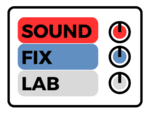Mixing is an important step in the music production process where individual tracks are combined, balanced, and enhanced to create a cohesive and professional-sounding final product. In this comprehensive guide, we will walk you through the complete process of mixing a song, covering everything from preparation to finalizing the mix. Whether you’re a beginner or an experienced producer, these steps will help you achieve a polished and well-balanced mix.
1. Preparing for the Mix
Before diving into the mix, it’s essential to properly prepare your session and organize your tracks. Start by ensuring your audio files are properly labeled and organized in your Digital Audio Workstation (DAW). Set your session’s sample rate and bit depth according to your project requirements. Clean up any unwanted audio, such as background noise or clicks, and consider applying corrective editing to individual tracks, if necessary.
2. Setting Up the Mix
Begin by creating a solid foundation for your mix. Start with the drums and bass, as they provide the rhythmic backbone. Balance the levels of each drum element, sculpt the tone using EQ, and add dynamics using compression. Next, focus on the bassline, ensuring it sits well with the kick drum and complements the overall low-end of the mix.
3. Balancing the Tracks:
With the foundation in place, move on to balancing the other instruments and vocals. Start by adjusting the levels of each track to achieve a good balance between them. Use your ears and trust your intuition to make subjective decisions about which elements should be prominent and which should be more subtle. Experiment with panning to create a sense of space and width in your mix.
4. Equalization (EQ):
EQ is a powerful tool for shaping the frequency content of individual tracks. Use EQ to enhance the clarity and separation of different instruments. Address any frequency clashes by cutting or boosting specific frequencies. Be mindful of the overall tonal balance, ensuring that no frequency range is overpowering or lacking.
5. Dynamics Processing:
Compression and other dynamics processors are essential for controlling the dynamic range of individual tracks. Use compression to even out the levels of dynamic instruments and vocals, adding sustain and impact to your mix. Employ techniques such as sidechain compression to create space and clarity.
6. Effects and Spatial Processing:
Enhance the depth, width, and ambience of your mix using effects and spatial processing. Reverbs, delays, and modulation effects can add a sense of space and dimension to individual tracks. Experiment with different settings and combinations to achieve the desired sonic landscape while ensuring the elements remain cohesive.
7. Automation:
Automation is a powerful tool that allows you to make precise adjustments to volume, panning, EQ, and other parameters over time. Use automation to create movement, build energy, emphasize important sections, and add interest to your mix. Automate effects sends, filter sweeps, and even individual note velocities for a more dynamic and engaging listening experience.
8. Reference Mixing:
Regularly reference your mix against professionally mixed songs in a similar genre. This helps you gauge the overall tonal balance, loudness, and quality of your mix. Use reference tracks as a guide but maintain your unique artistic vision.
9. Finalizing the Mix:
Once you’re satisfied with the balance and processing of your mix, it’s time to make final adjustments. Fine-tune the EQ, dynamics, and effects to ensure every element has its rightful place. Pay attention to details like fades, crossfades, and any necessary edits. Compare your mix on different playback systems to ensure it translates well across various platforms.
10. Exporting and Mastering:
When you’re confident in your mix, export it as a high-quality audio file. Mastering, a separate process, involves optimizing the mix for different playback systems and formats. Consider hiring a professional mastering engineer or educate yourself on mastering techniques to further enhance the overall clarity, loudness, and cohesiveness of your final mix.
Mixing a song is a creative and technical process that requires attention to detail, critical listening, and experimentation. By following these comprehensive steps, you can develop your skills and create professional-sounding mixes. Remember, practice is key, and don’t be afraid to trust your ears and take risks to achieve your desired sonic vision. Happy mixing!




